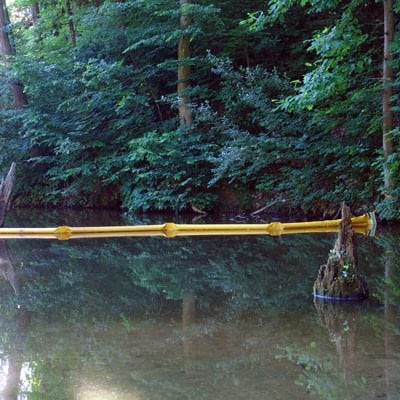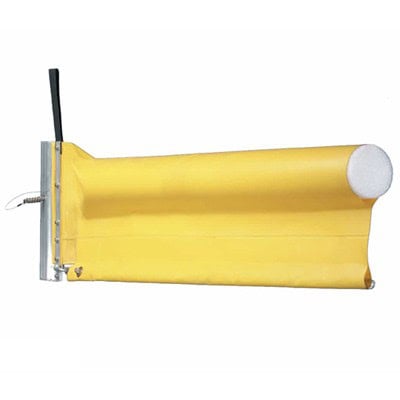In today’s world, water pollution control is more important than ever. One effective tool for managing and mitigating water pollution is the water containment boom. These booms are essential in containing oil spills and other pollutants, preventing them from spreading further into water bodies. This article explores the different types of water containment booms and their specific applications, helping you understand how they contribute to environmental protection.
What Are Water Containment Booms?
Water containment booms are floating barriers designed to contain, divert, or control the spread of pollutants in water bodies. They are widely used in various scenarios, from controlling oil spills to managing debris in harbors and rivers. By creating a physical barrier, these booms help isolate contaminants, making cleanup and recovery efforts more effective and efficient.

Types of Water Containment Booms
There are several types of water containment booms, each designed for specific applications and conditions. Understanding the differences between them is crucial for selecting the right boom for a particular situation.
1. Oil Spill Booms
Oil spill booms are specifically designed to contain oil spills on water surfaces. They are typically made from materials that resist oil absorption, allowing them to float and maintain their effectiveness over extended periods. Oil spill booms are often used in conjunction with other oil spill response strategies, such as skimmers and dispersants, to maximize the effectiveness of cleanup efforts.
Applications
- Containment of oil spills in oceans, lakes, rivers, and harbors
- Protection of sensitive shorelines and habitats from oil contamination
2. Debris Booms
Debris booms are designed to capture and contain floating debris, such as trash, logs, and other unwanted materials, preventing them from entering waterways or sensitive areas. They are typically constructed from durable, buoyant materials that can withstand the force of water currents and waves.
Applications
- Managing floating debris in rivers, lakes, and harbors
- Preventing trash and debris from reaching shorelines and beaches
- Protecting water intakes and infrastructure from clogging
3. Silt and Sediment Booms
Silt and sediment booms are used to control the spread of fine particles and sediments in water bodies, particularly during construction or dredging activities. These booms help prevent sediments from dispersing and impacting water quality and aquatic habitats.
Applications
- Containing sediment runoff during construction or dredging operations
- Protecting aquatic habitats from sediment pollution
- Maintaining water clarity and quality in lakes and reservoirs
4. Fire Booms
Fire booms are specialized containment booms designed for in-situ burning of oil spills on water. Made from fire-resistant materials, these booms can withstand high temperatures, allowing for controlled burning of the oil, which helps reduce the volume of the spill.
Applications
- Conducting in-situ burning of oil spills in open water
- Reducing the environmental impact of oil spills through controlled burning

Factors to Consider When Choosing Water Containment Booms
Selecting the right water containment boom involves considering several factors, including the type of pollutant, the environment in which the boom will be used, and the specific goals of the containment effort.
Environmental Conditions
Different water environments present unique challenges for boom deployment. Factors such as water currents, wave height, and wind conditions can influence the effectiveness of a boom. For instance, ocean environments may require more robust booms with higher freeboards to withstand stronger currents and waves.
Type of Pollutant
The nature of the pollutant being contained will also dictate the type of boom required. Oil spills, for example, require booms with oil-resistant materials, while debris booms are more suitable for capturing floating trash and logs.
Deployment and Maintenance
Ease of deployment and maintenance are critical considerations, especially in emergency response scenarios. Some booms are designed for quick deployment and retrieval, while others may require more complex setup and maintenance procedures.
The Role of Water Containment Booms in Environmental Protection
Water containment booms play a vital role in preserving aquatic ecosystems and preventing the spread of pollutants. By effectively isolating contaminants, these booms help minimize the environmental impact of spills and debris, protecting both wildlife and human populations. In addition to their use in emergency response, containment booms are also valuable for ongoing pollution prevention and management efforts in various water bodies.
Conclusion
Water containment booms are essential tools in the fight against water pollution. With a variety of types available, each tailored to specific applications and conditions, these booms provide effective solutions for containing and managing pollutants in water bodies. By understanding the different types of water containment booms and their applications, you can make informed decisions to protect the environment and ensure the safety of our precious water resources.
Incorporating these booms into your water pollution control strategy can significantly enhance your ability to respond to and manage pollution incidents, ultimately contributing to a cleaner, healthier environment for all.
Discover Water Containment Solutions at Absorbents Online
At Absorbents Online, we understand the importance of having the right tools to tackle water pollution incidents effectively. Our range of high-quality Water Containment Booms is designed to help you manage spills, prevent contamination, and protect the environment efficiently. Whether you’re dealing with small-scale spills or require solutions for larger projects, our products are engineered for performance and reliability. Don’t leave your environmental protection to chance; equip yourself with the best water containment solutions available. Visit Absorbents Online today to explore our selection of Water Containment Booms and take a proactive step towards safeguarding our precious water resources.